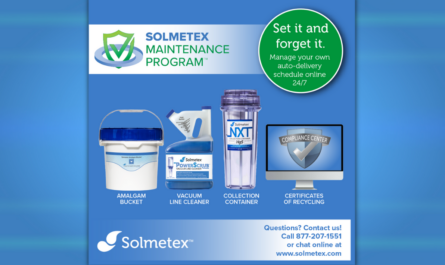Sponsored Content: Jarvis Analytics
Jarvis Analytics brings sharpened awareness of key metrics, KPIs to your practices
“Gartner [a technology research and consulting company] reports more than 90% of business leaders view data as a strategic asset, yet fewer than 10% utilize its monetary value.” – 5 Important Steps to Unlock the Power of Data Existing Within Your Practice Management System (Jarvis Analytics)
DSOs are generating more data than ever before, but they often struggle to turn their practice management and patient data into valuable insights that can grow their business. Most dental groups run with outdated spreadsheets filled with stale data, or they depend on the reports that practice management system is producing. The reality is that practice management systems were never designed to provide data-driven insights.
When Facebook, Google and Amazon were starting out, they used data and data analytics methods as differentiators. These leaders are now among the most powerful companies in the world, which proves just how valuable data analytics can be. Today, big data isn’t just for big tech companies. Small businesses, startups and some of the fastest-growing dental businesses are using their data as a competitive advantage.
So some key questions are:
- Do you know your data’s full value?
- Are you using it to grow your business?
- What’s the first metric you check each morning?
- And what’s the most important KPI for measuring success in your organization?
These are some of the critical questions to ask yourself and your team as a DSO leader managing operations and tracking KPIs. A comprehensive dental analytics platform can help you analyze your data, track metrics and KPIs, and help you discover hidden opportunities like increasing or creating new lines of revenue, maintaining clinical excellence and creating operational efficiencies.
Dental analytics platforms and dental dashboards can be leveraged to achieve operational efficiencies throughout an organization. Dashboards provide insights that enable dental businesses to drive revenue and improve operational and clinical quality.
The best model for high-growth DSOs should be matched back to specific initiatives that hold people accountable and include a visual scoreboard that everyone can monitor. Segmenting KPIs between general doctor, hygiene, office and specialty guarantees clear accountability within a team concept.
“This model can carve out some responsibility in your practice,” said Melissa Marquez, COO of Jarvis Analytics and a former DSO executive. “If hygiene reappointments are suffering, for example, and only 60% of your patients are leaving with a future hygiene visit scheduled, then that squarely motivates your hygiene coordinator to get that percentage to a level that helps meet practice goals.”
Another recommendation to help you utilize your data is to not only identify your wildly important goals, but also track the lead and lag measures for your regions, practices and providers that keeps everyone rowing in the same direction. When your leadership agrees on how to measure your goals, progress and accountability will take a front seat.
“Most dental groups come to us with a good understanding of what they want their initiatives to be for the year,” Marquez said. “They are mostly clinical because doctors are attracted to DSOs that make patient care a top priority. But we help them understand how to see their practices as a whole and compare practice numbers.”
If measuring dental KPIs is a new concept to a staff, Marquez says DSO leaders must meet their staff where they are and start with the basics. “Keep it simple before you add on new clinical KPIs or advanced metrics,” she said. “Also consider who on your team would make a great champion of an analytics platform.”
She says think of those high-potential team members that are admired and are go-to people in your organization. “Early adopters of your initiatives can influence the entire organization far beyond your own reach,” Marquez emphasized.
A Henry Schein One company, Jarvis Analytics is a dental analytics platform that acts as an intelligence layer on top of the practice management system. The platform seamlessly connects to data and analyzes it, compares it and ranks it by locations and providers through performance metrics within a dental organization.
“DSO leaders can look at their data in weekly or monthly ranges, but we also automatically include per working day, per patient and per procedure ranges. We want to feature those,” Marquez said. “Any providers who are in the bottom 20% of the organization are highlighted in red. Those are opportunities for organizational leadership to drive growth.”
Standards are set by dental associations outside of DSOs. “If those associations claim 60-70% of Americans have periodontal disease, you can apply that to your metrics and say, ‘what’s wrong in this practice if we’re only treating 10% for that,’” Marquez said. “It could be geography, but it also helps level the playing field.”
“DSOs are full of great leaders and most have an idea of what’s happening in their practices, but the data is validating,” she said. “Practices live in their myths until the data helps change behavior.”
The operations team is critical. Marquez used to focus her own DSO teams around improving case acceptance by utilizing third-party financing more often.
“It’s easy to say a practice could do $200,000 more if it used third-party financing, but things won’t change until you understand why a practice believes what it believes,” she said. “Use the data plus the people power of the operations team to bring about change.”





